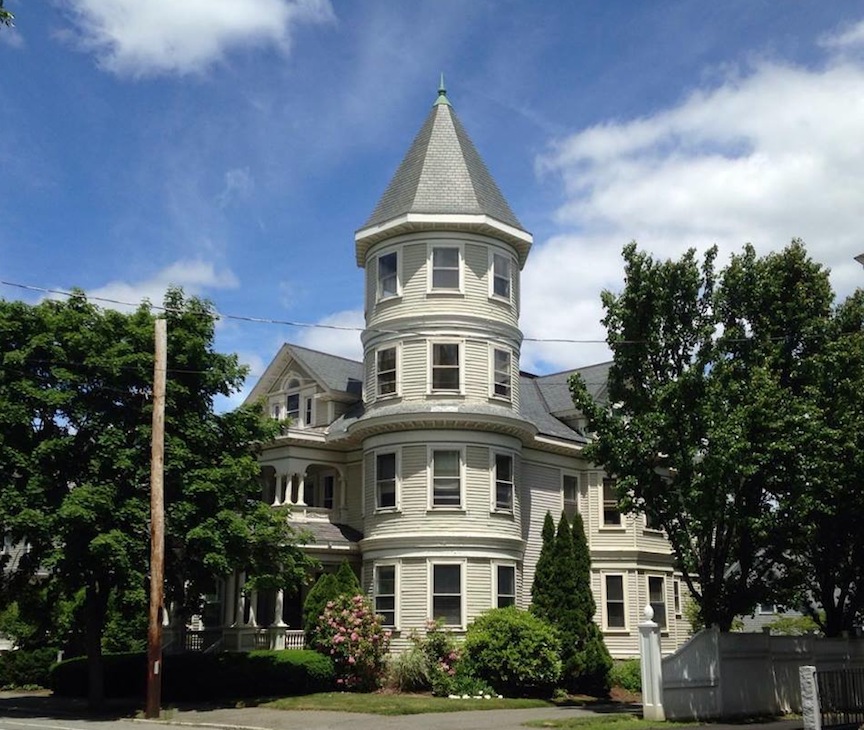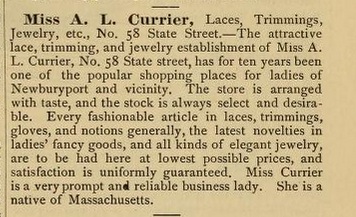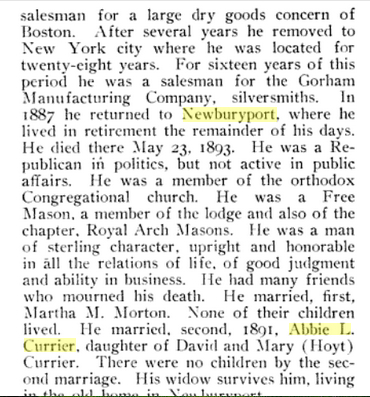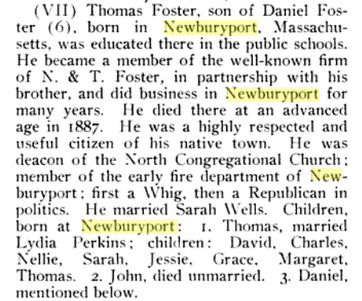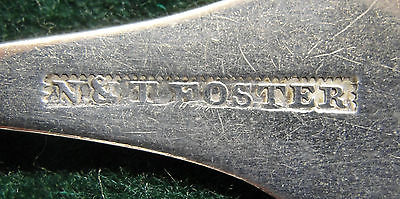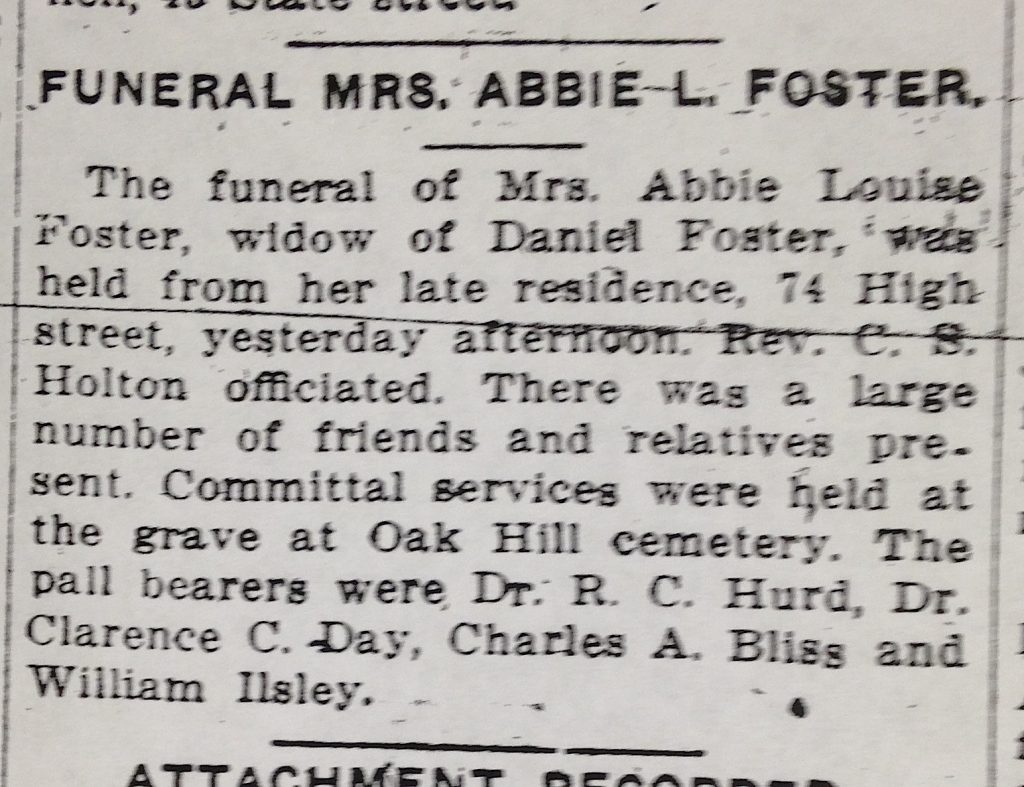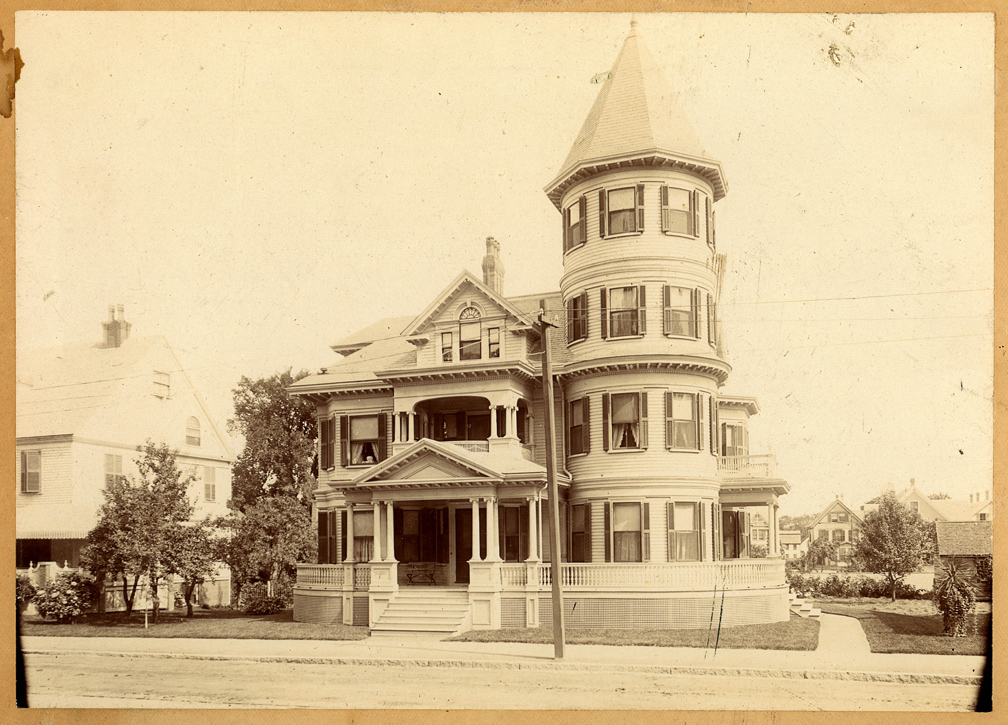When Jack Santos proposed this wonderful mini-project for Yankee Homecoming, “If This House could Talk,” I was excited about it for all sorts of reasons, and because of finding out about my grandmother I had learned all sorts of “tricks” about finding out about the past.
In my family there is history about all my grandparents on both sides, except my maternal grandmother, on which there was always complete silence. I once asked my mother where my grandmother grew up and I was told, “In a German convent.” I was around 6 at the time, and if your mother tells you your grandmother grew up in a “German convent” then she grew up in a “German convent” end of story. However as I grew older that made absolutely no sense at all, and I wanted to know about her life.
Long after my parents had died I thought about hiring a genealogist, and then I found out how much they cost, so I thought I’d try to see how much I can find out on my own, and it turns out I was able to find out a heck of a lot.
My grandmother was born in 1891, she died in 1963, that much I knew. I knew that she had eloped with my grandfather. One of the first things that I found was a newspaper article about the elopement, which gave me her maiden name, Alma C. Roes. The elopement made the front page news. It made the front page news because of my great-grandfather.
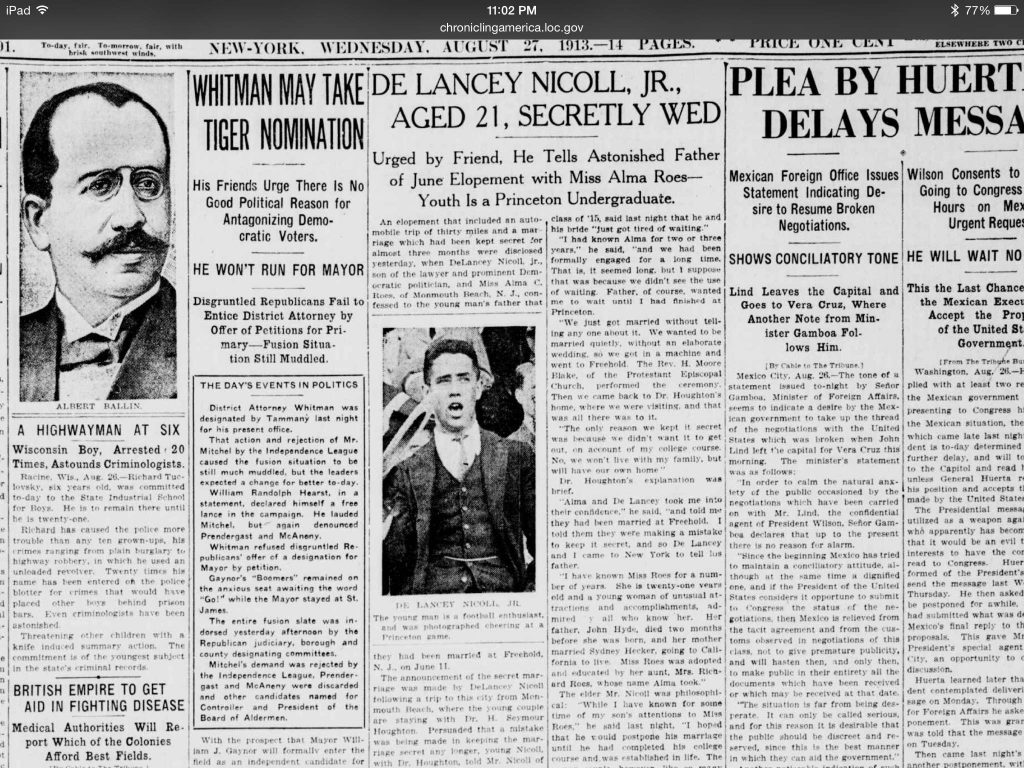
Story of my grandparents elopement in the newspaper
My great-grandfather came from an old New York family that lived at the end of Long Island on Shelter Island. My great-grandfather was well educated, not much money. However, he was very ambitious, smart, ruthless and knew how to “play the game,” as my father used to say. He came to New York fairly penniless and he became very wealthy and very powerful in New York political and social circles. He had two children, his daughter died as a young adult, and that left my grandfather.
I had my grandmother’s maiden name from the newspaper article and I also had her father and mother’s name and her adopted aunt’s name, so that helped me a whole lot to go on a hunt.
And this is what I found out. She was born in New Jersey, I have no idea if she was abandoned by her parents, her mother did indeed leave and eventually go to California the way the newspaper article indicates. And she was taken in, and eventually adopted by a German grocer and his wife. I found them in the 1900 Census (great tool by the way, I used familysearch.org which is free) living in New Jersey, Alma is 8. I found my grandmother again in the 1910 Census, she was 18. There is no mention of her adopted father. They are living on West 98th Street in Manhattan (it was not the glamorous Upper West Side at that time), Her adopted mother is supporting the family by doing embroidery while Alma is listed as a clerk in an office. They have two boarders. Why are they living in Manhattan, what happened to their home in Jersey City and my grandmother’s adopted father, I have no idea what any of these answers might be.
I have no idea what happened between 1910 when my grandmother was 18 and when she eloped with my grandfather in 1913 at age of 21. And one of the few things that I was told by my family was that when my grandparents eloped was that my great-grandfather disowned his son until the first grandchild arrived a year later, which apparently changed my great-grandfather’s outlook. I cannot imagine what being the cause of your husband being disowned must have done to her psychologically. It cannot have been good. However when my grandfather was welcomed back into the family, there was money and lots of it.
I found my grandparents and now they have four children, 3 daughters and 1 son in Hewlett Harbor, Long Island. And I also found a brochure about Hewlett Harbor. Apparently my grandfather was among other things a developer, and he is one of the people who invested in the land and developed Hewlett Harbor, as well being an attorney and a divorce lawyer.
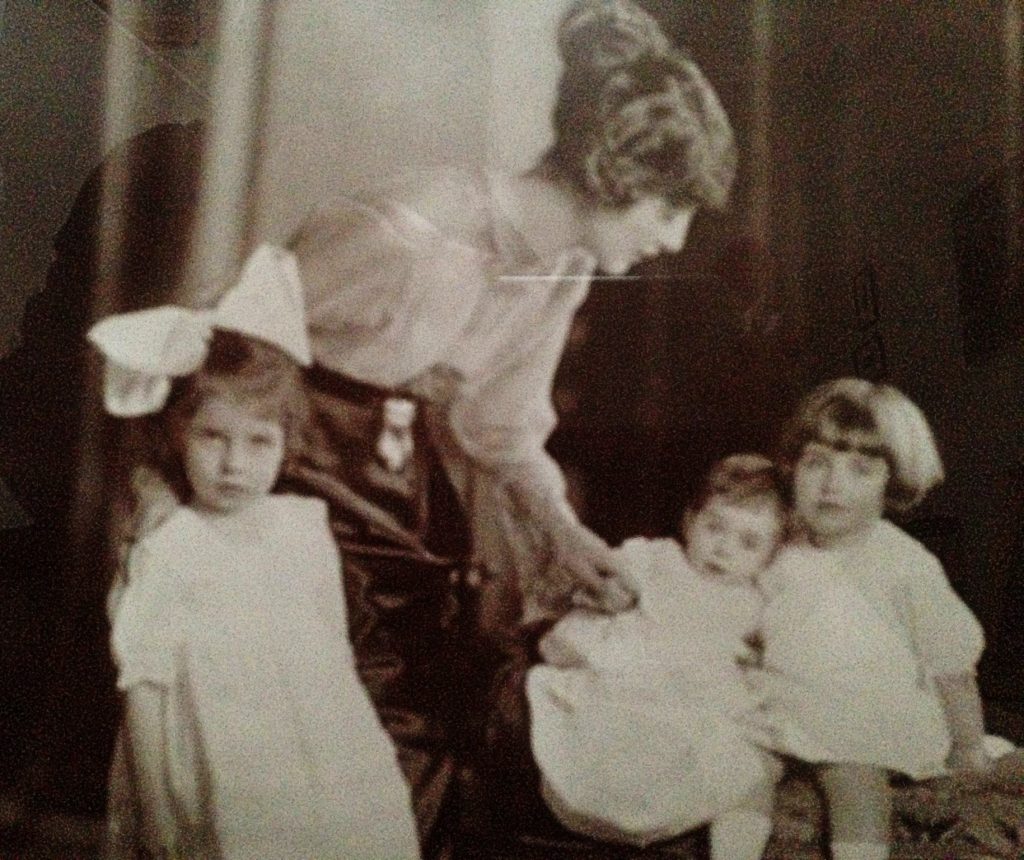
My grandmother with her three daughters (my mother is the youngest)
My grandmother shows up again in the 1930 Census, she is 38, my grandfather is 39, they have four children living at home, my mother is 11, and there are five servants, gone are the boarders, they seem to be doing very well in Hewlett Harbor, Long Island. This is a long way from an abandoned child who is adopted by a German grocer and his wife in New Jersey.
However, my grandfather divorced my grandmother in 1934, the charge was cruelty on his part. I found a short article in a Reno, Nevada paper. Divorce in 1934 was a huge scandal. My grandfather made the paper again when her remarried three weeks after his divorce from my grandmother in Reno. It sounds as if he married someone that she must have known, there seems to be a fair amount of gossip in the paper about the “new couple,” and to me the description of my grandfather’s second wedding ceremony sounds, if you’re my grandmother and her children, callous, if not downright cruel (those newspaper articles my mother saved).
In 1940 Census my grandmother is listed as divorced, she is 48, my uncle, 15, the youngest and is the only one now at home. They were still in Hewlett and down now to three servants. Financially my grandmother appears to be doing Ok, psychologically, from what little I was able to learn from my mother, things are definitely were not Ok, and had not been Ok for a long, long time.
My grandfather divorced again, leaving his second wife. And in the end he squandered all of his father’s money.
I found my grandmother in Church Creek, Maryland, a very small town (possibly just a post office?) on the Chesapeake Bay. She lived in the house I remember visiting once, 1823 White Haven Drive. I called the post office in Church Creek and told the story of my grandmother to the woman there who happened to have a great deal of “institutional memory,” her name is Ronnie Renolds, a wonderful woman. And when I told her about my grandmother’s life and where she came from, she said, “Good for her.” Ronnie Renolds put me in touch with a woman now in her 90s who lived across the street from my grandmother. Mrs. Branic told me that she never knew my grandmother had 3 daughters, which confirmed what I had always thought, that her three daughters, including my mother, for whatever reason, had abandoned her as well. She did say that her son, my uncle, visited her all the time and that she remembered my grandmother as a lovely woman.
So I found out the bittersweet story of my grandmother who is buried next to my grandfather on Shelter Island, the place where my great-grandfather grew up.
If you are trying to find out the story of your house for “If This House Could Talk–Newburyport.” Familysearch.org is a great resource which has the different censuses as well as other things, so is Google, especially putting whatever you are looking for in “quotes”. Here we also have Salem Deeds Online which is an amazing resource. You can often follow your house back into the past by using “book and page” feature. It is a great deal of fun.

Book and Page, Salem Deeds Online
